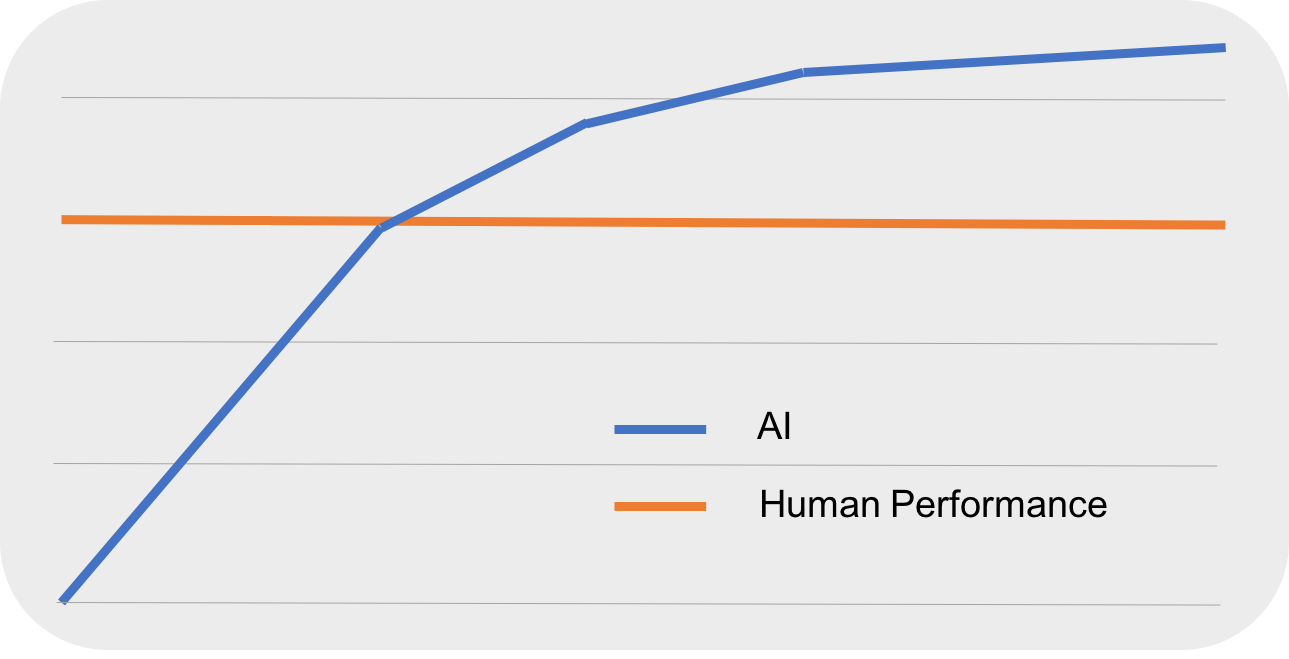Despite the exciting past and promising prospects, challenges are still there. As we open this Pandora's box of AI, one of the key questions is, where are we going? What can it do? This question has been addressed by people from various backgrounds. In one of the interviews with Andrew Ng, he posed his point of view that while today’s AI is making rapid progress, such momentum will slow down up until AI reaches a human level of performance. There are mainly three reasons for this, the feasibility of the things a human can do, the massive size of data, and the distinctive human ability called insight. Still, it sounds very impressive, and might be a bit scary, that one day AI will surpass humans and perhaps replace humans in many areas:

There are basically two main streams of AI, the positive ones, and the passive ones. As the creator of Paypal, SpaceX, and Tesla Elon Musk commented one-day:
But right now, most AI technology can only do limited work in certain domains. In the area of deep learning, there are perhaps more challenges than the successful adoptions in people's life. Until now, most of the progress in deep learning has been made by exploring various architectures, but we still lack the fundamental understanding of why and how deep learning has achieved such success. Additionally, there are limited studies on why and how to choose structural features and how to efficiently tune hyper-parameters. Most of the current approaches are still based on validation or cross-validation, which is far from being theoretically grounded and is more on the side of experimental and ad hoc (Plamen Angelov and Alessandro Sperduti, Challenges in Deep Learning, 2016). From a data source perspective, how to deal with fast moving and streamed data, high dimensional data, structured data in the form of sequences (time series, audio and video signals, DNA, and so on), trees (XML documents, parse trees, RNA, and so on), graphs (chemical compounds, social networks, parts of an image, and so on) is still in development, especially when concerning their computational efficiency.
Additionally, there is a need for multi-task unified modeling. As the Google DeepMind’s research scientist Raia Hadsell summed it up:
Until now, many trained models have specialized in just one or two areas, such as recognizing faces, cars, human actions, or understanding speech, which is far from true AI. Whereas a truly intelligent module would not only be able to process and understand multi-source inputs, but also make decisions for various tasks or sequences of tasks. The question of how to best apply the knowledge learned from one domain to other domains and adapt quickly remains unanswered.
While many optimization approaches have been proposed in the past, such as Gradient Descent or Stochastic Gradient Descent, Adagrad, AdaDelta, or Adma (Adaptive Moment Estimation), some known weaknesses, such as trap at local minima, lower performance, and high computational time still occur in deep learning. New research in this direction would yield fundamental impacts on deep learning performance and efficiency. It would be interesting to see whether global optimization techniques can be used to assist deep learning regarding the aforementioned problems.
Last but not least, there are perhaps more opportunities than challenges to be faced when applying deep learning or even developing new types of deep learning algorithms to fields that so far have not yet been benefited from. From finance to e-commerce, social networks to bioinformatics, we have seen tremendous growth in the interest of leveraging deep learning. Powered by deep learning, we are seeing applications, startups, and services which are changing our life at a much faster pace.











































































